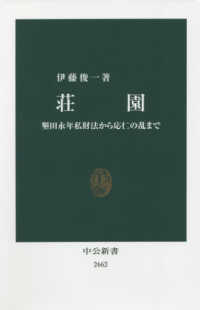- ホーム
- > 洋書
- > 英文書
- > Nature / Ecology
Full Description
Drawing upon research and examples from around the world, it offers an up-to-date overview, together with insights into directly applicable approaches for poly-cropping systems and landscape-scale management to improve the stability of agricultural production systems, helping achieve food security.








